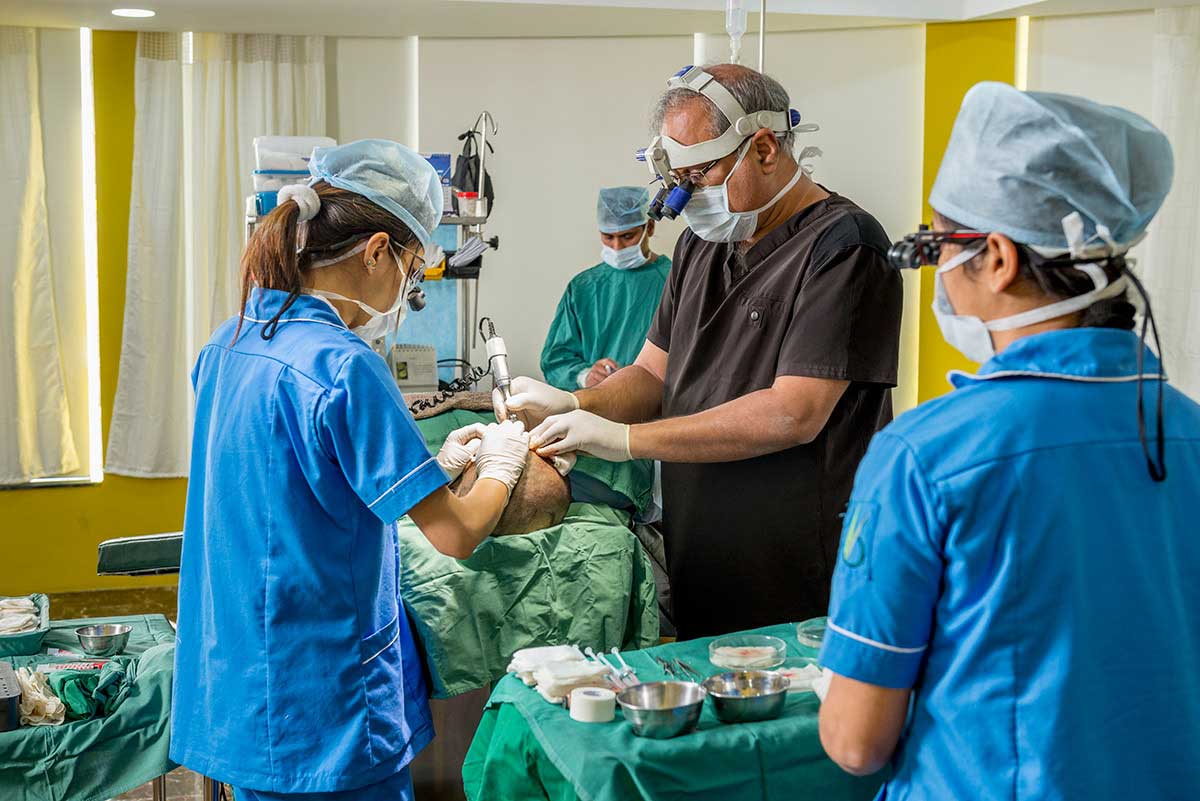Hair transplantation is often framed as a predictable, routine cosmetic intervention. But in truth, occasional surprises lurk beneath the scalp — and one particularly dangerous entity is the arteriovenous malformation (AVM). This post is especially relevant for prospective patients and hair transplant physicians who might believe that delegating surgical decisions to non-physician staff is acceptable. Let me explain why that’s a perilous assumption.

What Is a Scalp AVM, and Why Does It Matter?
An arteriovenous malformation (AVM) is a tangle of arteries and veins bypassing the usual capillary bed.
Wikipedia
While commonly discussed in the context of the brain, AVMs can—and rarely do—occur in the scalp.
In hair transplant surgery, the presence of an occult (hidden) scalp AVM is dangerous because:
These lesions often lie silent, unrecognized before surgery.
When instrumented (scalp punch, blade, or cannula), they may bleed profusely through high‐flow vascular channels.
Quick surgical judgment is essential to control hemorrhage, adapt strategy, or abort safely.
Because some AVMs remain clinically silent until insult, they are analogous to “icebergs beneath calm waters.” They may show no outward sign until provoked.
Clinical Warning Signs and Preoperative Workup
While some AVMs manifest with telltale signs, many do not. Possible red flags include:
Pulsatile swelling or a soft tumor on the scalp
Audible bruit
Skin discoloration or vascular blush
History of scalp swelling, headaches, or prior scalp interventions
If suspicion arises, a rigorous surgeon will order imaging (Doppler ultrasound, MR angiography, or catheter angiography) to delineate vascular anatomy. Even with full preoperative imaging, some lesions only manifest under surgical stress.
Intraoperative Realities — Why the Surgeon Must Be Present
When an AVM becomes evident only after the first incision or punch, a non-physician operator is nearly helpless. Only a trained surgeon can:
Identify and control feeders immediately
Alter the plan (e.g. reduce area, change technique)
Decide whether to abort the session
Initiate advanced hemostasis measures or call in interventional radiology/neurosurgery
In rare and severe cases, one may require staged management or referral for embolization or resection.
This scenario sharply contrasts a technician-led setup (focused on graft count) versus a physician-led clinic where safety overrides cosmetic ambition.
Why This Matters Ethically (and Practically)
A technician may view hair restoration as a mechanical task. But a surgeon must view each scalp as a complex anatomical canvas, with risks that demand vigilance and judgment.
When pathology is occult, it is not the graft count or revenue that should guide intraoperative decisions. It is patient safety. Complex AVMs reaffirm an unshakable truth: hair transplantation is a surgical specialty—not a beauty service.
Conclusion
An occult scalp AVM in hair transplantation is a rare but catastrophic risk. Only a capable, medically trained surgeon can anticipate, detect, and manage intraoperative surprises. Delegating surgical authority to technicians is not just negligent—it betrays the very ethos of patient safety. As the adage goes, “a calm sea never made a skilled sailor”—and in hair transplant surgery, it is in those stormy moments that true skill is tested.


